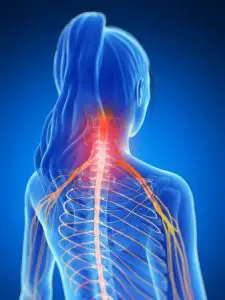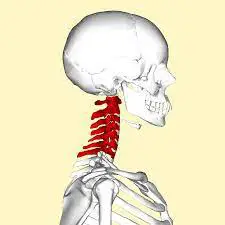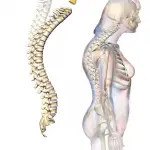Cervical radiculopathy, commonly known as the pinched nerve is a condition that occurs when the nerve in the neck is irritated or compressed causing it to branch away from the spinal cord. This may cause numbness, muscle weakness, and pain that extends to the shoulder.
If this condition is left untreated for a long time, it may cause weakness in the limbs which can slow down your reflexes, thus inducing severe incoordination that may affect your daily life.
If you have been looking for treatment for cervical radiculopathy, then someone may have recommended that you try using an inversion table. So, are inversion tables good for cervical radiculopathy? Continue reading to find out more.
What are inversion tables?
An inversion table is a device designed to create space between vertebrae and stretch the spine by removing gravitational pressure from the roots of the nerve. It involves an individual lying upside down to ease the pressure of gravity on your nerves and the disks of your spine. Inversion therapy helps to redistribute spinal fluid equally, thus reducing pain caused by cervical radiculopathy. It also encourages the spinal disc to relax and space apart thus decreasing normal compression.
Are inversion tables good for cervical radiculopathy?
Now that you know what inversion tables are, the next question in your mind is whether they are good for cervical radiculopathy or not. The answer is YES, inversion tables are good for cervical radiculopathy. According to Mayo Clinic, inversion tables help to eliminate gravitational force from the disk in your spinal system and nerve roots thus increasing the space between your vertebrae.
This helps to relieve pressure off your nerves, thus reducing pain caused by pinched nerves. By increasing the space between your vertebrae, an inversion table helps to stretch any stuck muscle in the neck and back thus relieving pain.
Benefits of using inversion tables for cervical radiculopathy

There are several benefits of using inversion tables to heal pinched nerves. These benefits occur because of decompression which helps to get rid of discomfort and chronic pain associated with cervical radiculopathy. Below are the main benefits of using inversion tables for cervical radiculopathy.
One of the benefits of inversion tables is that they help to realign the cervical vertebrae by increasing the space between vertebrae. When you lie on an inversion table by inclining your body towards the ground, you allow the gravitational force to release pressure and increase space between vertebrae which helps in the realignment of the cervical vertebrae.
The inversion table helps to relieve stress and tension leading to better overall flexibility.
Other benefits of the inversion table on cervical radiculopathy include:
-
- Improving your posture
-
- It helps to realign the cervical vertebrae
-
- It increases flexibility
-
- Relieves stress and tension
-
- Reinforces support muscles and ligaments around your neck
-
- It encourages your entire spine to start realigning naturally
Tips on how to use an inversion table for cervical radiculopathy

Step 1: Find a spacious room
Find a spacious room that will provide enough space to set up the inversions table. Once you set up the table, inspect it to ensure that all joints, straps, and pivots are in good working condition. The last thing you want is to get injured when undergoing inversion therapy. To avoid this, ensure that all crucial components of the inversion table are working properly. You should always inspect your inversion table before using it.
Step 2: Set the inversion table
Once you have located a spacious room, the next step is to set up the inversion table. We recommend that you follow the instructions given by the manufacturer when setting up the inversion table. Make sure all parts of the inversion table are connected properly and firmly to guarantee your safety.
Step 3: Wear the right outfit
Once the table is set, wear the right outfits before using the inversion table. Wearing the right outfit will not only enhance your comfort when using the inversion table but will also guarantee your safety. Please don’t use the inversion table bare feet. It will cause discomfort and also increase the chance of injuring yourself. Wear good sports shoes that provide good support, safety, and stability.
Step 4: Get on the table
Once everything is set, the final step is to get on the inversion table, then lock your feet and fasten other traps across your body to ensure that you are safe. Once you have secured yourself on the table, start the inversion process.
If you are using an inversion table for the first time, start slow then increase the amount of time spent on the table gradually. Speak to your physician to help you know how long you should remain inverted, warning signs to watch out for, and proper angles to use.
Hold the side straps, then press the right button that will make you turn into the upside-down position. Listen to your body carefully while undergoing therapy. Don’t press your body too much because it may lead to pain and discomfort. Also, don’t forget to perform gentle stretches while inverted to relax your muscles.
What are the possible side effects of using an inversion table for cervical radiculopathy?

Before we discuss the possible side effects that you are likely to suffer from when using an inversion table for cervical radiculopathy, it is important to point out that the inversion table is generally safe, meaning you are less likely to suffer from side effects if you follow the instructions given by your physician.
The most common side effects associated with using an inversion table are headache, blurred vision, and increased blood pressure. So, if you have hypertension or if you have optical issues, it is recommended that you first consult your physician for recommendations before you start using it.
People who are under medication or have an underlying medical condition are also encouraged to consult their physician before using an inversion table.
Final thoughts
If you are thinking of using an inversion table to treat cervical radiculopathy but wondering whether you are making the right decision, then worry not because you have nothing to worry about. An inversion table is good for cervical radiculopathy.
It will help to get rid of the pain and discomfort associated with this condition as well as accelerate the healing process. However, to get the best results when using the inversion table, be gentle and follow the instructions given to the latter.





